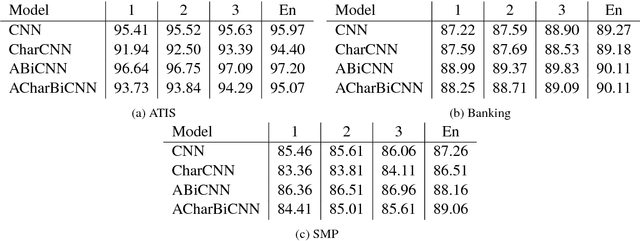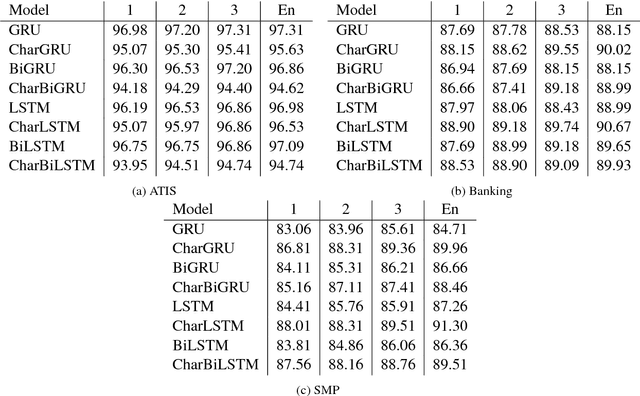Multi-Layer Ensembling Techniques for Multilingual Intent Classification
Paper and Code
Jun 20, 2018



In this paper we determine how multi-layer ensembling improves performance on multilingual intent classification. We develop a novel multi-layer ensembling approach that ensembles both different model initializations and different model architectures. We also introduce a new banking domain dataset and compare results against the standard ATIS dataset and the Chinese SMP2017 dataset to determine ensembling performance in multilingual and multi-domain contexts. We run ensemble experiments across all three datasets, and conclude that ensembling provides significant performance increases, and that multi-layer ensembling is a no-risk way to improve performance on intent classification. We also find that a diverse ensemble of simple models can reach perform comparable to much more sophisticated state-of-the-art models. Our best F 1 scores on ATIS, Banking, and SMP are 97.54%, 91.79%, and 93.55% respectively, which compare well with the state-of-the-art on ATIS and best submission to the SMP2017 competition. The total ensembling performance increases we achieve are 0.23%, 1.96%, and 4.04% F 1 respectively.
 Add to Chrome
Add to Chrome Add to Firefox
Add to Firefox Add to Edge
Add to Edge